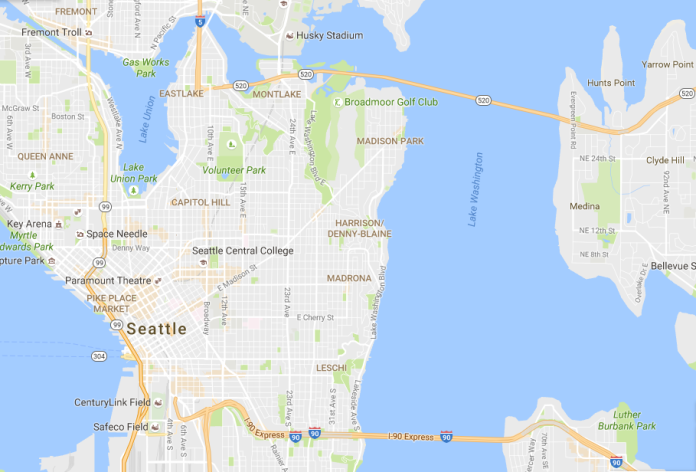Seattle’s Interstate 5 is in rough shape. Maintenance has been deferred so long that a full rebuild is likely necessary, as former Washington State Department of Transportation (WSDOT) secretary Douglas MacDonald detailed in this article. Momentum is building to lid I-5 in Downtown Seattle to mitigate the impact of the freeway and add park space; it even got a mention in the adopted Seattle 2035 Comp Plan.
Before moving forward, we should probably ask the hard question: should I-5 bisect our center city in the first place whether lidded or not? We don’t need I-5 in Seattle’s core because it provides so little in the way of mobility while costing so much in wasted land and in pollution and the adverse health effects associated with pollution.
For several hours a days, the freeway and extensive network of interchanges are gridlocked into a major obstacle rather than an asset. And to make the loss all the worse, the land adjacent to Downtown, South Lake Union, and Eastlake is extremely valuable. If you haven’t noticed, land in those neighborhoods is worth a crazy amount of money. The Seattle Times got $62.5 million for two full blocks it sold to Onni Group in 2013. Removing I-5 between I-90 and SR-520 would free up more than 50 blocks by my rough calculation, which could mean more than a billion dollars worth of land. Stricken with budget shortages, Washington State Department of Transportation (WSDOT) might be forced to sell off Downtown Seattle land to finance its tireless efforts in suburbia.
Why has maintenance been deferred so long? It could be WSDOT is stalling until Sound Transit builds out ST2 to Lynnwood and Federal Way. Or the department could be stalling until it figures out where the heck it will secure the billions and billions necessary to maintain such an overgrown and tired freeway. The state legislature passed a $16 billion transportation package in 2015 but focused on highway expansion rather than catching up on I-5 maintenance. Road maintenance isn’t sexy.
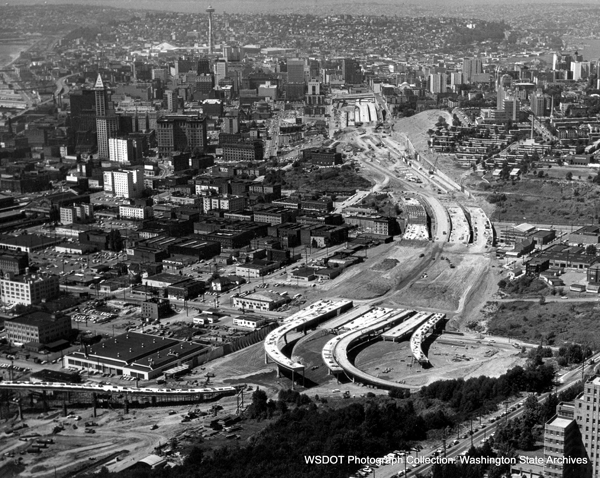
So what would Seattle look like without a freeway blasting through its core? Here’s what it looks like now followed by a little mock-up I made with much of the street grid restored and the freeway gone.
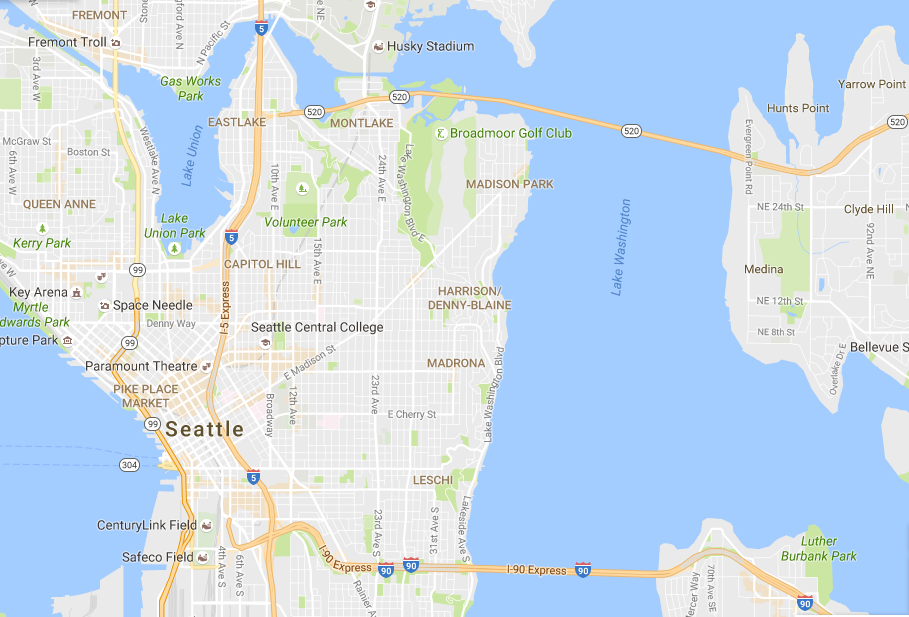
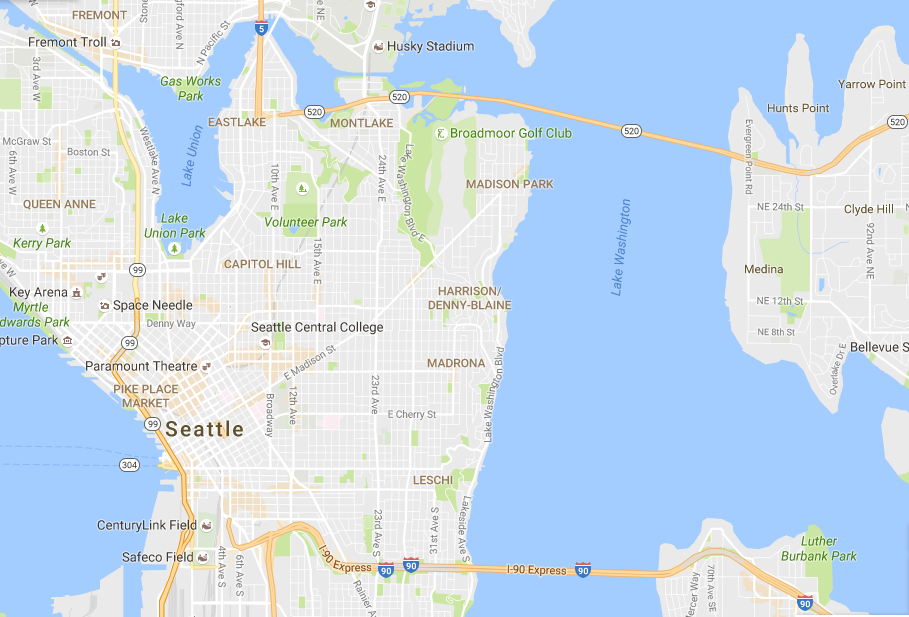
Eastlake and South Lake Union flow smoothy into Capitol Hill without I-5 in the way. First Hill suddenly becomes integrated with Downtown and Pioneer Square, providing much easier and more pleasant pedestrian access. The hole blasted in the International District disappears. Intersections that used to cause big problems for bus reliability like Denny Way and I-5 would move more steadily rather than getting backed up from on-ramp traffic. And in I-5’s absence, Sound Transit’s growing light rail network can pick up the slack to carry commuters Downtown.
But what about interstate traffic and interstate commerce? Well, I-405 can handle north-south interstate traffic. I-405 is in pretty solid shape, unlike I-5, and growing in size. Meanwhile, I-90 would still carry freight from the Port of Seattle into the interior of the state and vice versa. In fact, extracting the clogged artery of I-5 Downtown may actually improve traffic flow to the Port of Seattle by lessening the induced demand and simplifying nearby interchanges.
The federal department of transportation may protest at the removal of a core interstate freeway it built. That said, the federal department of transportation is quickly finding itself financially insolvent as its gas tax revenues dwindle, in large part due to cars becoming more efficient and less reliant on gasoline. Meanwhile, Congress has shown little interest in implementing other road user fees high enough to fully compensate; it used gimmicks to fund the last federal transportation package. In other words, the federal department of transportation may not be in a position to protest or require the maintenance of its many overbuilt arteries.
The beauty of this plan is that I-90 and SR-520 still serve cross-Lake Washington traffic and feed the freeways headed out of Seattle. It’s actually fairly conservative. We keep some freeways in Seattle, mostly north of the Ship Canal and south of the stadiums, but eliminate them where they do most harm and squander valuable land most egregiously. We’d also have the extravagant Bertha-drilled tunnel to feed SR-99 traffic relatively unobtrusively, if expensively, through our downtown core. (That is assuming the tunnel is completed–the tunnel is about half done, even if the source of the funding to finish off the project is in legal limbo.)
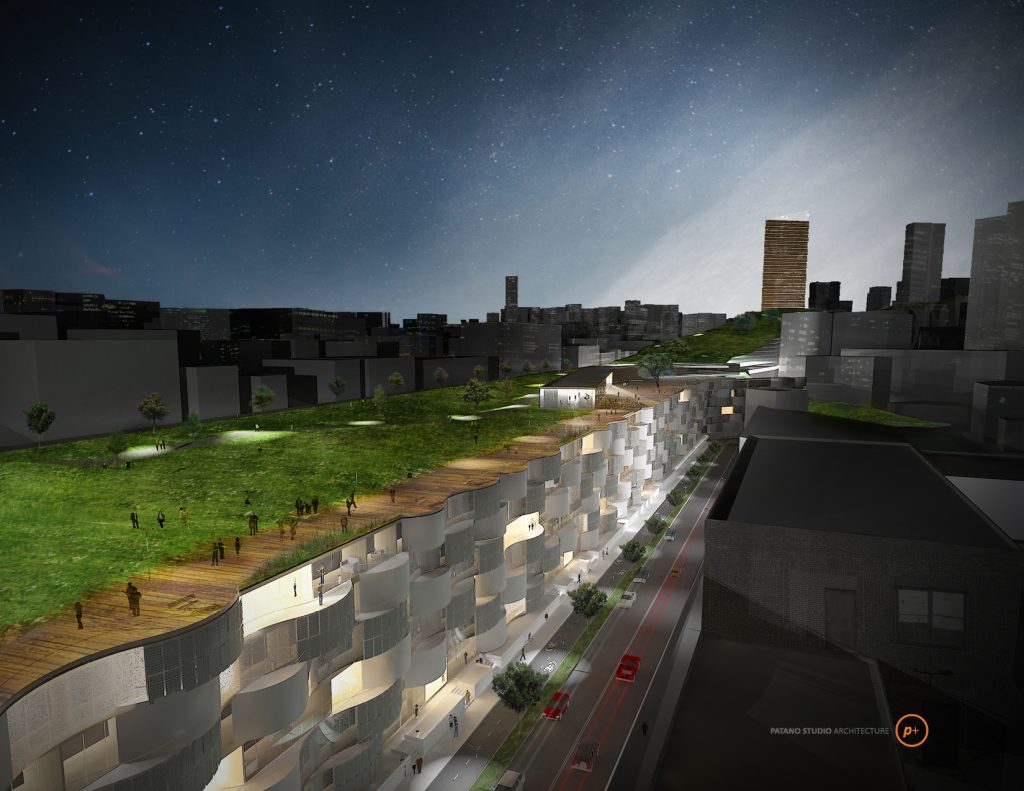
Plans to lid I-5 Downtown are intriguing but they add a billion-dollar-plus project onto a multi-billion dollar maintenance overhaul. It’s not inconceivable money could be secured, but it’s also not fiscally prudent next to the more salubrious and human-friendly option of not rebuilding the freeway where it never should have been in the first place. Lids also need to be reinforced at significant expense to support dense housing overhead. Simply eliminating I-5 and restoring the street grid means we can build as high as we want on the salvaged land.
The Downtown section is already adjacent to 40-story towers or soon to be. Imagine 40-plus-story towers taking the place of bumper-to-bumper automobilia doing little good to anyone but belching pollution into some of our most densely populated neighborhoods. While we are being ambitious, imagine high speed rail linking us to Portland and Vancouver running in a cut and cover tunnel where I-5 once ran. I-5 provides real estate that is straight enough to run high speed rail, which, in an era of priced carbon, will be very competitive with airline travel. That represents the future much more so than freeways in urban cores.
The City Council just saw fit to preserve a section of the “Ramps to Nowhere” for the next completed R.H. Thomson Freeway. Supporters said they wanted to commemorate the citizen activists who prevented an expressway from blasting through the Central District and Montlake. That was a worthy fight, and I can buy the argument it’s worth a memorial.
That said, let’s not only nourish ourselves with nostalgia. Let’s continue our worthy fight against urban freeways. We can undo the wanton freeway-building damage of the past. I-5 doesn’t need to blast through our city center. We Seattleites wiped the R.H. Thomson Expressway off the map; we can do the same for I-5.
Doug Trumm is publisher of The Urbanist. An Urbanist writer since 2015, he dreams of pedestrian streets, bus lanes, and a mass-timber building spree to end our housing crisis. He graduated from the Evans School of Public Policy and Governance at the University of Washington in 2019. He lives in Seattle's Fremont neighborhood and loves to explore the city by foot and by bike.

